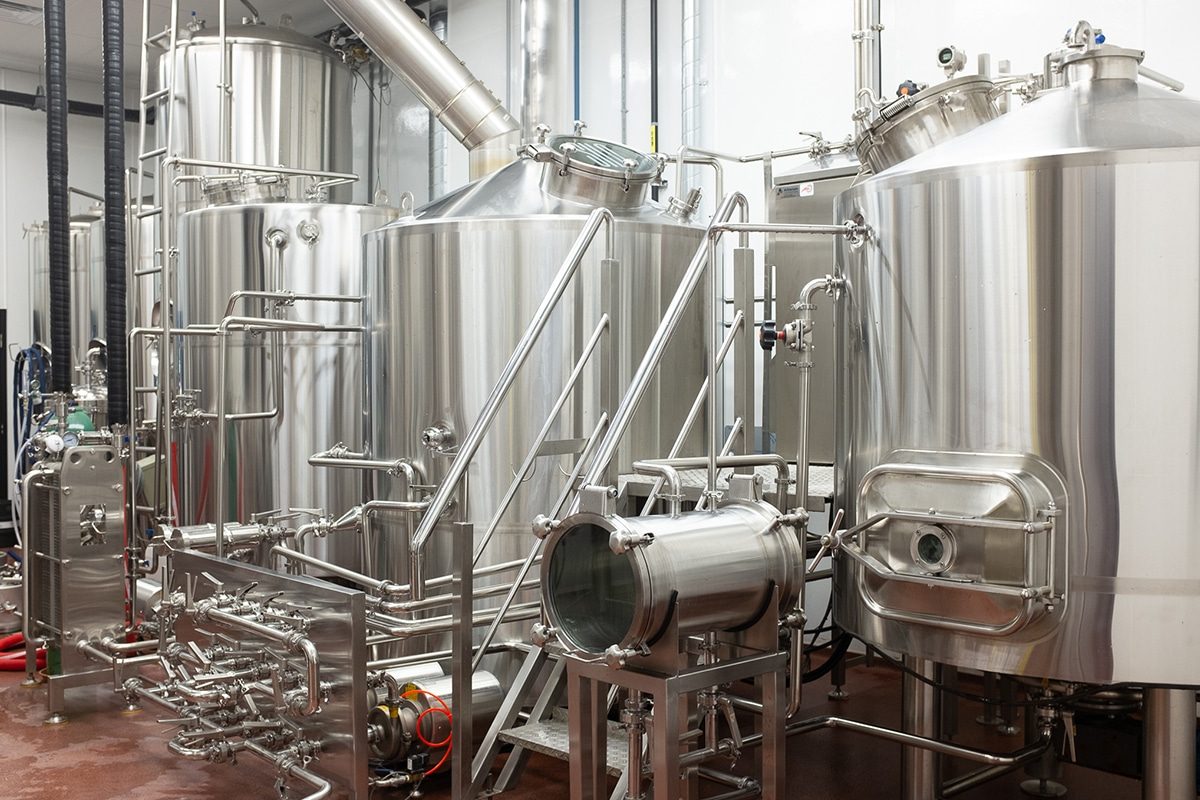
Why Is Chinese Brewing Equipment So Cheap?
In the ever-evolving world of brewing, one enigma continues to captivate enthusiasts and professionals alike: Why is Chinese brewing equipment so remarkably affordable? From the smallest homebrew setups to the grandiose machinery of commercial breweries, Chinese-manufactured brewing equipment consistently offers competitive pricing without sacrificing quality. This intriguing phenomenon sparks curiosity and prompts a deeper exploration into the intricate economics and dynamics that underpin the affordability of Chinese brewing equipment.
As brewers seek to optimize their operations and balance quality with cost-effectiveness, understanding the factors behind the inexplicable affordability of Chinese brewing equipment becomes paramount. In this comprehensive analysis, we embark on a journey to unravel the mysteries and shed light on the multifaceted reasons behind the astonishingly low prices of Chinese brewing equipment.
Complete Guide
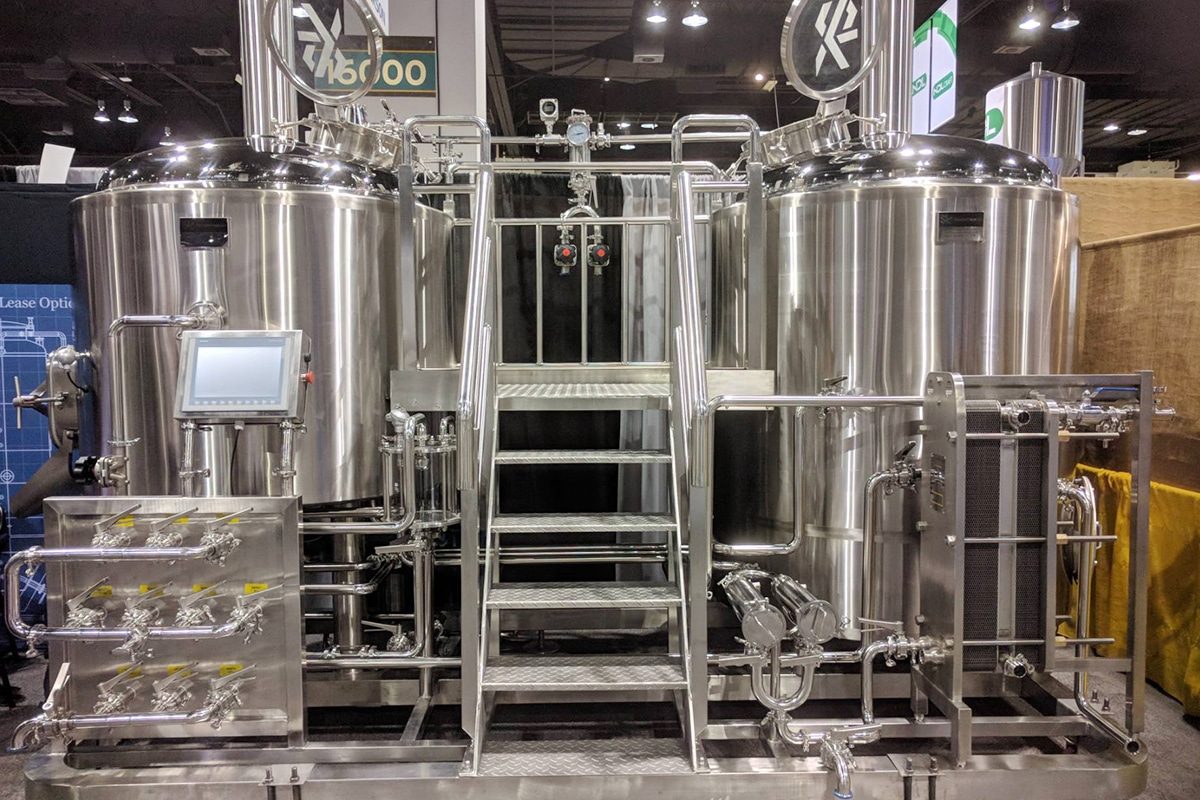
Historical Evolution of Chinese Manufacturing
Understanding why Chinese brewing equipment is so affordable requires delving into the historical evolution of manufacturing in China. China’s journey from an agrarian society to the global manufacturing powerhouse it is today has been marked by significant transformations and strategic interventions.
- Pre-Reform Era: Before the economic reforms of the late 20th century, China’s manufacturing sector was largely underdeveloped. The country’s economy was primarily agrarian, with limited industrialization and a focus on self-sufficiency. State-owned enterprises dominated the manufacturing landscape, operating under a centralized planning system that stifled innovation and efficiency.
- Market Reforms: Deng Xiaoping’s economic reforms in the late 1970s heralded a new era of openness and economic liberalization in China. The reforms dismantled many of the barriers to private enterprise and foreign investment, paving the way for the emergence of a market-driven economy. Special Economic Zones (SEZs) were established to attract foreign investment and promote export-oriented manufacturing, laying the foundation for China’s manufacturing boom.
- Rise of Export-Oriented Manufacturing: In the 1980s and 1990s, China emerged as the “world’s factory,” leveraging its abundant labor force and low production costs to become a manufacturing hub for global markets. Export-oriented manufacturing, particularly in industries such as textiles, electronics, and consumer goods, fueled rapid industrialization and economic growth. Chinese manufacturers capitalized on economies of scale and cost advantages to produce goods at competitive prices for export to markets around the world.
- Technological Upgrading: As China’s manufacturing sector matured, the focus shifted from low-value-added assembly work to higher-value-added production and technological innovation. The government implemented initiatives such as the “Made in China 2025” plan, which aimed to upgrade China’s manufacturing capabilities and promote innovation in key industries. Investments in research and development, advanced manufacturing technologies, and skills training propelled China up the value chain, enabling the production of more sophisticated and high-quality goods, including brewing equipment.
- Global Integration: China’s accession to the World Trade Organization (WTO) in 2001 further accelerated its integration into the global economy. The country became a vital node in the global supply chain, attracting multinational corporations seeking to leverage its manufacturing capabilities and access its vast consumer market. Foreign investment poured into China, fueling further industrialization and technological advancement in the manufacturing sector.
- Brewing Equipment Industry: Within this broader context of China’s manufacturing evolution, the brewing equipment industry has flourished. Chinese manufacturers have capitalized on the country’s manufacturing prowess, leveraging economies of scale, technological innovation, and a skilled workforce to produce brewing equipment at competitive prices. Today, Chinese brewing equipment is renowned for its affordability, quality, and versatility, making it a preferred choice for brewers around the world.
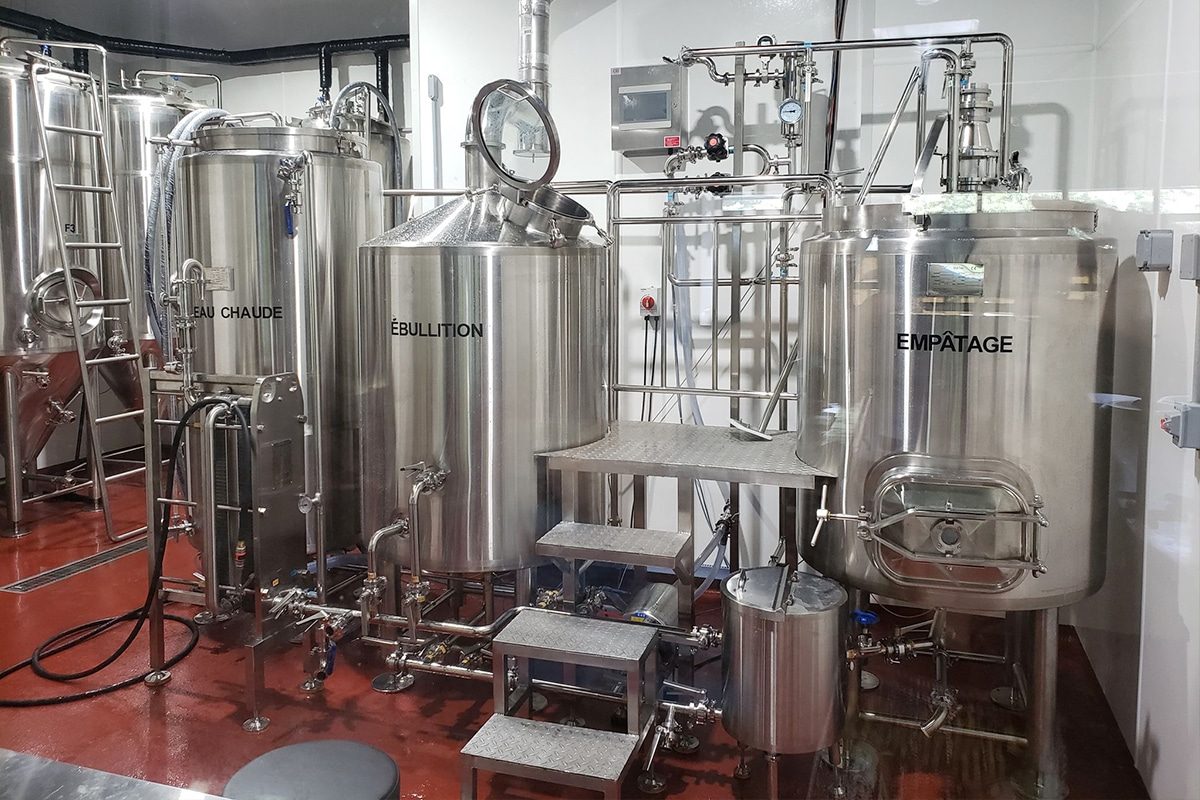
Labor Costs and Skilled Workforce
Central to the affordability of Chinese brewing equipment is the combination of a skilled workforce and relatively lower labor costs compared to many Western countries. China boasts a vast pool of laborers proficient in various manufacturing techniques, ranging from precision machining to intricate welding processes. This abundance of skilled labor, coupled with the country’s historically lower labor costs, creates a favorable environment for manufacturing operations.
- Abundant Skilled Labor: With a population exceeding 1.4 billion, China possesses a vast reservoir of skilled workers with expertise in diverse manufacturing disciplines. Vocational schools and technical institutes across the country churn out graduates proficient in areas such as metalworking, electrical engineering, and industrial design, ensuring a steady supply of skilled labor to meet the demands of the manufacturing sector.
- Lower Labor Costs: While labor costs in China have been steadily rising in recent years, they remain comparatively lower than those in many Western countries. Factors such as a large labor pool, intense competition among workers, and government policies aimed at maintaining labor cost competitiveness contribute to the lower overall labor expenses for brewing equipment manufacturers in China.
- Efficiency and Productivity: Chinese workers are renowned for their diligence, work ethic, and adaptability. They are often willing to work long hours and undergo extensive training to master new skills, contributing to higher levels of efficiency and productivity in manufacturing operations. This efficiency allows brewing equipment manufacturers to produce goods at a lower cost per unit, thereby reducing overall production expenses.
- Training and Education: China places a strong emphasis on vocational training and technical education to develop a skilled workforce. Vocational schools and training programs provide hands-on instruction in manufacturing techniques, machinery operation, and quality control processes, ensuring that workers are well-equipped to meet the demands of modern manufacturing industries such as brewing equipment production.
- Technological Advancements: Chinese manufacturers have embraced technological advancements to enhance the efficiency and productivity of their operations. Automation, robotics, and digital manufacturing technologies streamline production processes, reducing the reliance on manual labor and further optimizing labor costs. Additionally, advancements in digital training tools and virtual reality simulations facilitate the continuous upskilling of workers, ensuring that they remain proficient in the latest manufacturing technologies and techniques.
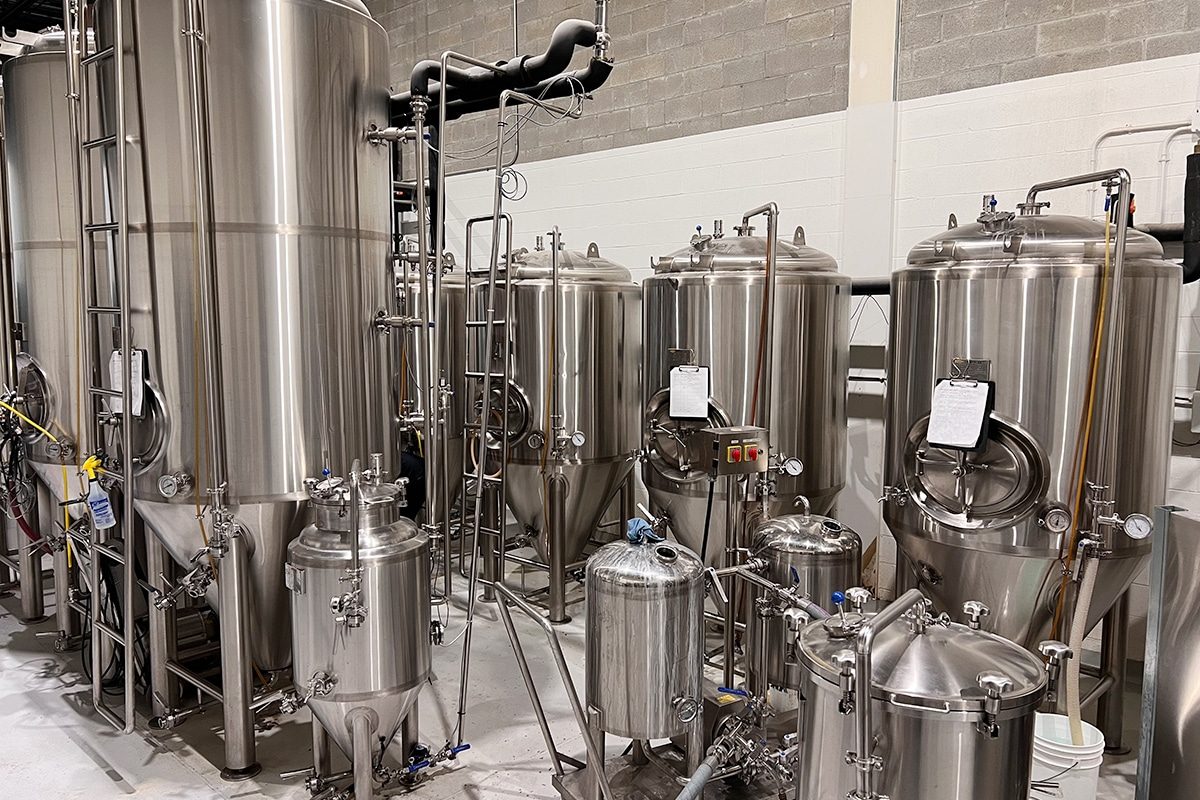
Economies of Scale in Chinese Manufacturing
Central to the affordability of Chinese brewing equipment is the concept of economies of scale, which refers to the cost advantages that arise when production volume increases. China’s vast manufacturing ecosystem allows companies to harness economies of scale to drive down production costs and offer competitively priced brewing equipment.
- Large Market Size: China’s enormous domestic market provides a fertile ground for manufacturers to scale up production and achieve economies of scale. With a population exceeding 1.4 billion, the country offers a substantial consumer base for brewing equipment, encouraging manufacturers to produce in large volumes to meet demand.
- Global Export Market: In addition to catering to the domestic market, Chinese manufacturers leverage economies of scale to tap into the global export market. China’s status as the world’s largest exporter of goods means that manufacturers can produce brewing equipment in large quantities for export to international markets, further driving down production costs.
- Efficient Supply Chains: China’s well-developed supply chain infrastructure enhances the efficiency of manufacturing operations and facilitates economies of scale. The country boasts extensive networks of suppliers, raw material providers, and logistics providers, allowing manufacturers to source components and materials at competitive prices and streamline production processes.
- Technological Advancements: Technological innovations play a crucial role in enabling economies of scale in Chinese manufacturing. Automation, robotics, and advanced manufacturing techniques enhance production efficiency and reduce labor costs, allowing manufacturers to ramp up production without proportionally increasing labor expenses.
- Diversification of Products: Chinese manufacturers often diversify their product offerings to capitalize on economies of scale. By producing a wide range of brewing equipment, from small-scale homebrew setups to large industrial machinery, manufacturers can spread fixed costs across multiple product lines, further reducing the cost per unit.
- Government Support: The Chinese government’s policies and incentives also support economies of scale in manufacturing. Subsidies, tax breaks, and other measures aimed at promoting industrial growth encourage manufacturers to expand production capacity and achieve greater economies of scale.
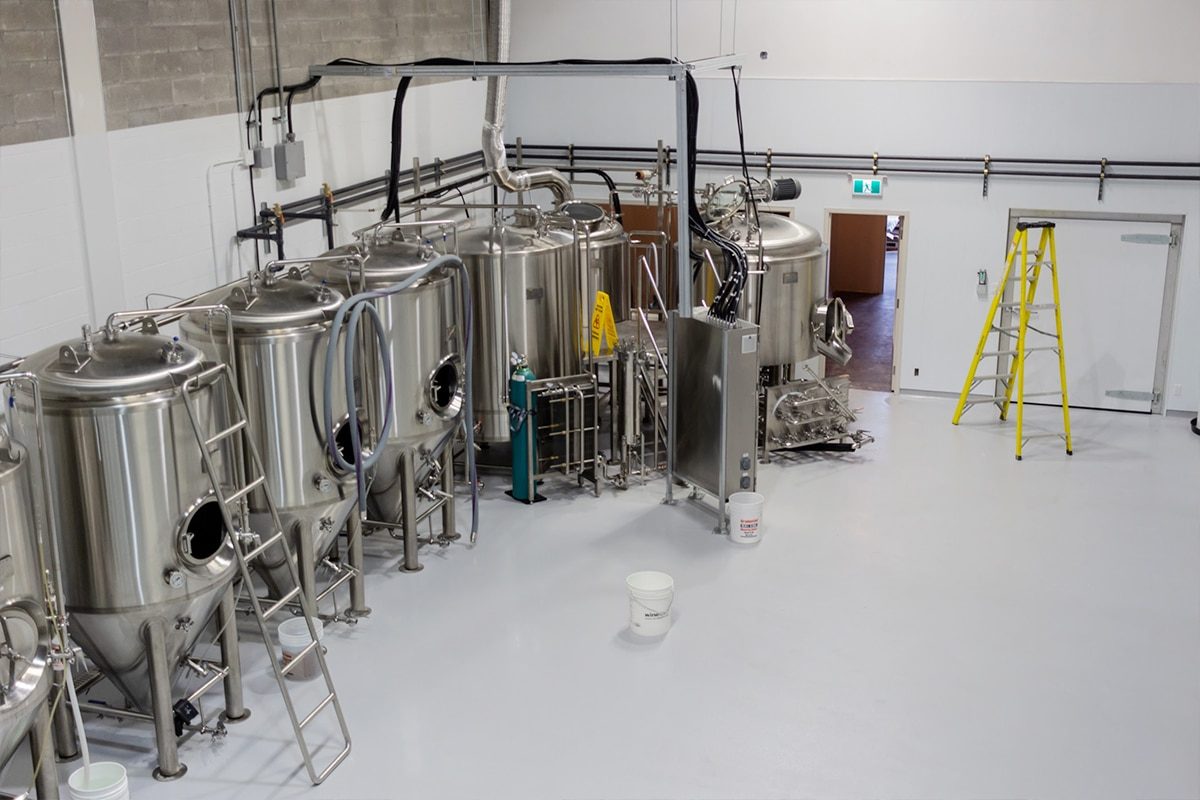
Lower Overheads and Business Environment
Another crucial factor contributing to the affordability of Chinese brewing equipment is the comparatively lower overhead expenses and business environment in China. Several key elements contribute to this favorable environment for manufacturing operations:
- Favorable Tax Policies: China offers various tax incentives and benefits to businesses, particularly in designated industrial zones and high-tech parks. These incentives include reduced corporate income tax rates, exemptions from value-added tax (VAT), and subsidies for research and development (R&D) activities. Such favorable tax policies help lower the overall cost of doing business for brewing equipment manufacturers in China.
- Regulatory Environment: China’s regulatory environment for businesses, while complex, tends to be less stringent compared to some Western countries. Streamlined regulatory processes and fewer bureaucratic hurdles translate into lower compliance costs and administrative burdens for manufacturers. This flexibility allows brewing equipment manufacturers in China to focus more on production and innovation, rather than navigating regulatory complexities.
- Access to Capital: China’s financial system provides ample access to capital for businesses, including manufacturers. State-owned banks and other financial institutions offer a range of financing options, including loans, lines of credit, and venture capital funding. This accessibility to capital enables brewing equipment manufacturers to invest in research, development, and production capacity expansion, further driving down costs through economies of scale.
- Cost of Real Estate: The cost of real estate in China, particularly in industrial zones and manufacturing hubs, is generally lower compared to many Western countries. This affordability allows brewing equipment manufacturers to acquire land and facilities at a lower cost, reducing overhead expenses related to property and facility management.
- Infrastructure Development: China has made significant investments in infrastructure development, including transportation networks, utilities, and telecommunications. These investments enhance the efficiency of manufacturing operations by reducing transportation costs, improving access to raw materials and components, and facilitating communication and collaboration within the supply chain.
- Flexible Labor Laws: China’s labor laws, while protective of workers’ rights, provide flexibility for employers in terms of hiring, firing, and labor management. This flexibility allows brewing equipment manufacturers to adjust their workforce according to fluctuating demand and market conditions, optimizing labor costs without compromising productivity.
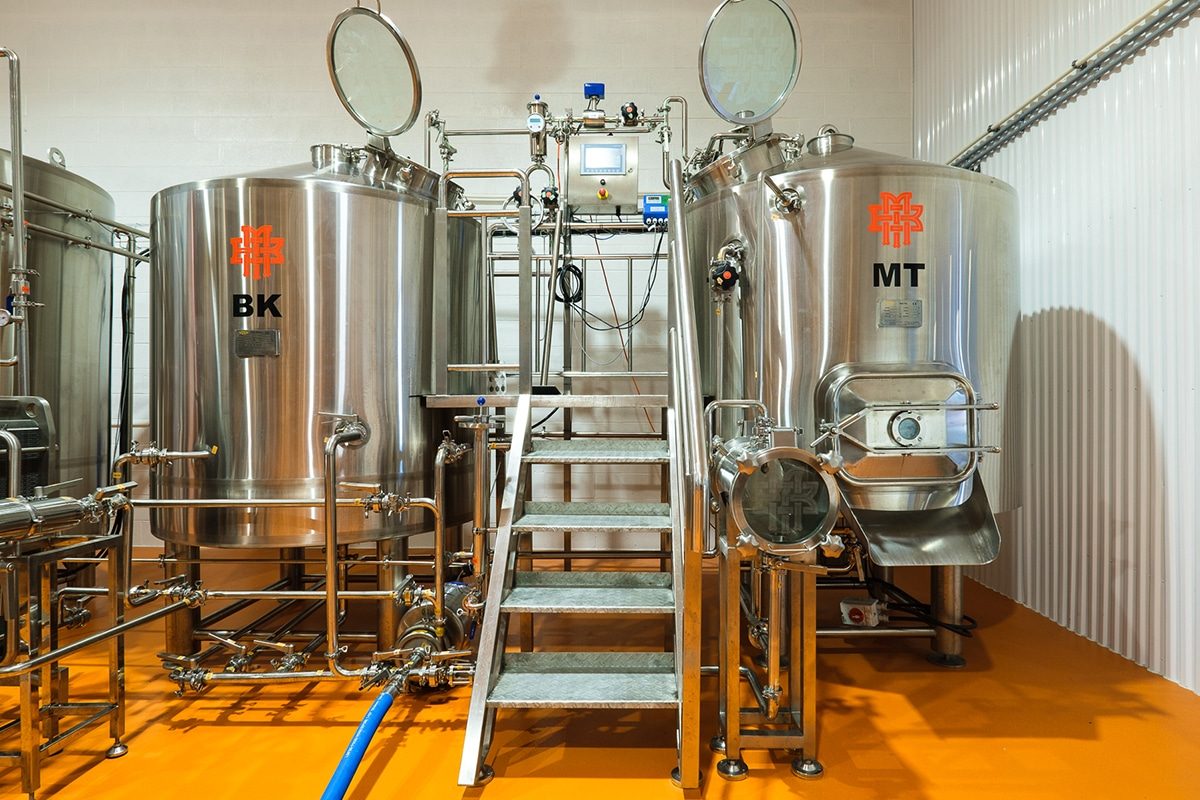
Supply Chain Efficiency and Raw Material Sourcing
The crucial factor contributing to the affordability of Chinese brewing equipment is the country’s supply chain efficiency and strategic sourcing of raw materials. China’s well-developed supply chain infrastructure, coupled with access to a diverse range of raw materials, enables manufacturers to streamline production processes and reduce costs.
- Extensive Supply Chain Infrastructure: China boasts a robust network of suppliers, manufacturers, distributors, and logistics providers, facilitating the efficient flow of goods and materials throughout the production process. From component sourcing to final product delivery, the supply chain ecosystem in China is characterized by reliability, responsiveness, and scalability. Manufacturers can leverage this infrastructure to optimize production schedules, minimize lead times, and reduce transportation costs, ultimately contributing to the affordability of brewing equipment.
- Centralized Manufacturing Hubs: China’s manufacturing hubs, clustered in regions such as Guangdong, Zhejiang, and Jiangsu provinces, serve as focal points for production activities and supply chain coordination. These industrial clusters bring together a multitude of suppliers, subcontractors, and service providers, creating economies of scale and fostering collaboration and innovation within the manufacturing ecosystem. By consolidating manufacturing activities in centralized hubs, Chinese manufacturers can achieve cost efficiencies through shared resources, reduced logistics costs, and enhanced collaboration along the supply chain.
- Strategic Raw Material Sourcing: China’s strategic sourcing of raw materials plays a pivotal role in driving down production costs for brewing equipment. The country has access to a diverse range of raw materials, including stainless steel, copper, aluminum, and various plastics and polymers, sourced domestically and internationally. Chinese manufacturers leverage their global network of suppliers and strategic partnerships to procure raw materials at competitive prices, negotiating favorable terms and securing reliable sources of supply. By optimizing raw material sourcing strategies, manufacturers can mitigate supply chain risks, reduce material costs, and maintain consistent product quality, thereby contributing to the overall affordability of brewing equipment.
- Vertical Integration: Many Chinese manufacturers adopt a vertically integrated approach to production, encompassing the entire value chain from raw material procurement to finished product assembly. By vertically integrating production processes, manufacturers gain greater control over quality, costs, and lead times, while reducing reliance on external suppliers and subcontractors. This integration enables manufacturers to optimize resource allocation, streamline production workflows, and capture value at each stage of the manufacturing process, resulting in cost savings that are passed on to customers in the form of competitive pricing for brewing equipment.
- Continuous Improvement: Chinese manufacturers are committed to continuous improvement and optimization of supply chain processes. Through the implementation of lean manufacturing principles, Six Sigma methodologies, and advanced supply chain management techniques, manufacturers strive to identify and eliminate inefficiencies, reduce waste, and enhance productivity throughout the supply chain. This relentless pursuit of operational excellence enables manufacturers to maintain a competitive edge in the global market and deliver high-quality brewing equipment at affordable prices.
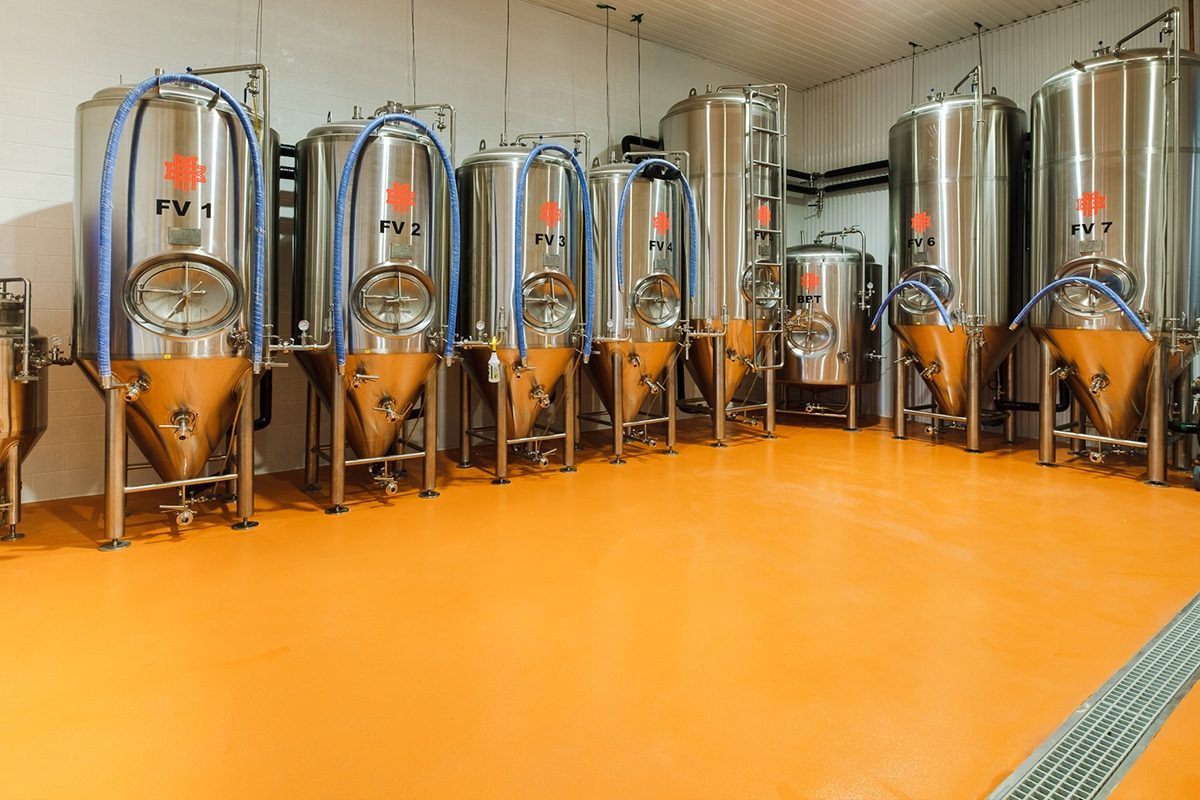
Technological Advancements in Chinese Manufacturing
One of the key drivers behind the affordability of Chinese brewing equipment lies in the country’s continuous investment and advancements in manufacturing technology. China has rapidly evolved from being a low-cost production hub to a global leader in innovation and technological development, with significant implications for the brewing equipment industry.
- Automation and Robotics: Chinese manufacturers have embraced automation and robotics to streamline production processes, enhance efficiency, and reduce labor costs. Automated manufacturing systems, equipped with robotics and advanced machinery, enable precise and consistent production of brewing equipment components, minimizing errors and maximizing productivity. By automating repetitive tasks and workflows, manufacturers can achieve higher throughput, lower production costs, and improved product quality, ultimately contributing to the affordability of brewing equipment.
- Digital Manufacturing Technologies: China has embraced digital manufacturing technologies such as computer-aided design (CAD), computer-aided manufacturing (CAM), and computer numerical control (CNC) machining to optimize production workflows and enhance manufacturing precision. These technologies enable manufacturers to design complex brewing equipment components with greater accuracy, simulate production processes virtually, and automate machining operations for increased efficiency and cost-effectiveness. By leveraging digital manufacturing technologies, Chinese manufacturers can reduce lead times, minimize material wastage, and deliver customized brewing equipment solutions at competitive prices.
- Smart Manufacturing and Industry 4.0: China is at the forefront of the global smart manufacturing revolution, embracing Industry 4.0 principles to digitize and connect manufacturing operations. Chinese manufacturers deploy Internet of Things (IoT) devices, sensor technology, and data analytics to monitor production processes in real time, optimize equipment performance, and predict maintenance needs proactively. By harnessing the power of data-driven insights and predictive analytics, manufacturers can improve production efficiency, reduce downtime, and enhance product quality, ultimately driving down costs and ensuring the affordability of brewing equipment.
- Research and Development (R&D) Investments: Chinese manufacturers allocate significant resources to research and development (R&D) activities, fostering innovation and technological advancement in the brewing equipment industry. Collaborations with universities, research institutions, and industry partners facilitate knowledge exchange, technology transfer, and the commercialization of cutting-edge brewing equipment solutions. By investing in R&D, Chinese manufacturers can develop proprietary technologies, differentiate their products in the market, and maintain a competitive edge in the global brewing equipment industry.
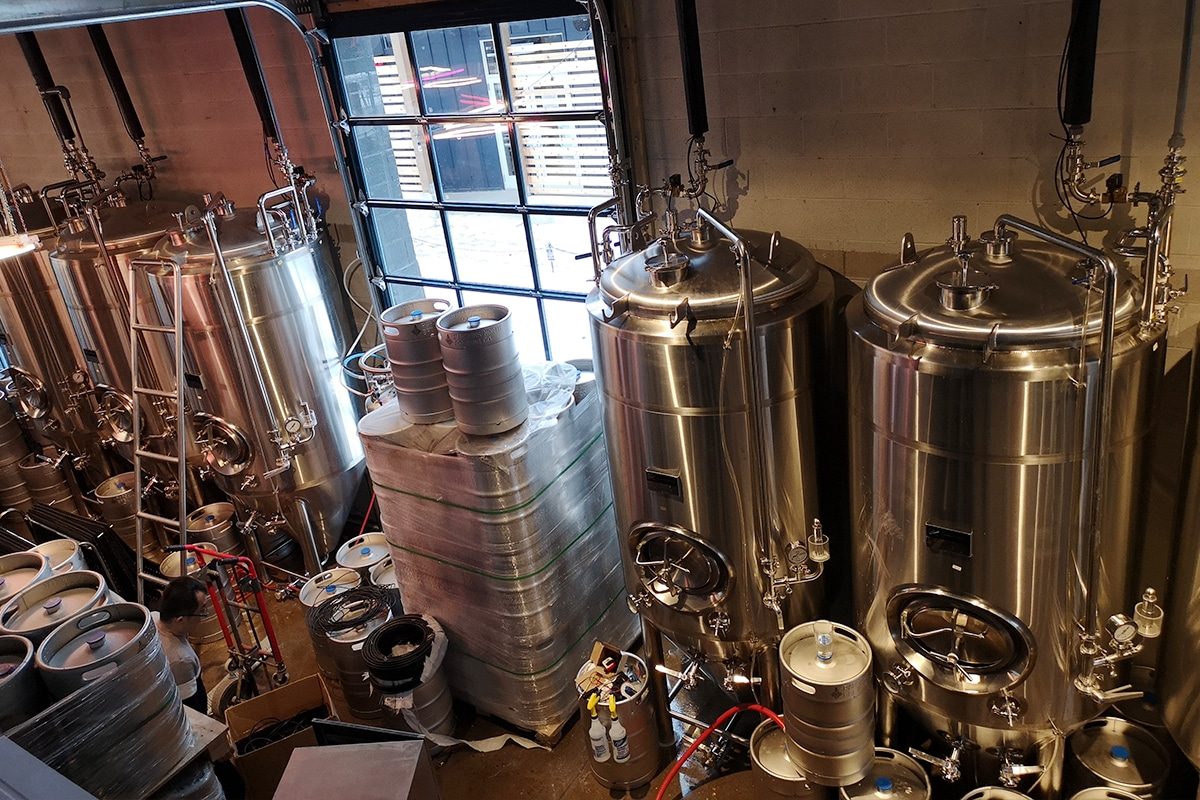
Market Competition and Global Dynamics
The affordability of Chinese brewing equipment is intricately linked to the competitive dynamics of the global market and China’s position as a leading manufacturing hub. Several key factors contribute to the competitiveness of Chinese brewing equipment on the global stage:
- Intense Market Competition: The global brewing equipment market is highly competitive, with numerous manufacturers vying for market share. Chinese manufacturers face stiff competition from both domestic rivals and international players, driving them to continuously innovate, optimize production processes, and offer competitive pricing to attract customers. This intense competition fosters efficiency, encourages product differentiation, and ultimately benefits consumers by driving down prices.
- Cost Competitiveness: Chinese brewing equipment manufacturers leverage their cost competitiveness to gain an edge in the global market. Factors such as lower labor costs, economies of scale, efficient supply chains, and favorable business environments enable Chinese manufacturers to produce brewing equipment at a lower cost compared to many competitors. By offering competitive pricing without compromising on quality, Chinese manufacturers can effectively capture market share and expand their presence in the global brewing equipment industry.
- Globalization and Trade Liberalization: China’s integration into the global economy through trade liberalization and globalization has facilitated the export of brewing equipment to markets around the world. The country’s membership in international trade agreements, such as the World Trade Organization (WTO), has opened doors to new opportunities for Chinese manufacturers to access global markets and compete on a level playing field. By leveraging global trade networks and supply chains, Chinese manufacturers can reach a broader customer base and capitalize on the growing demand for brewing equipment worldwide.
- Customization and Adaptability: Chinese manufacturers are known for their flexibility and adaptability in responding to customer needs and market trends. They offer a wide range of brewing equipment solutions, from standard off-the-shelf products to customized designs tailored to specific requirements. This ability to customize products and adapt to changing market dynamics enables Chinese manufacturers to cater to diverse customer preferences and gain a competitive edge in the global marketplace.
- Brand Recognition and Reputation: Chinese brewing equipment manufacturers have increasingly focused on building brand recognition and reputation in the global market. Through investments in marketing, branding, and customer service, Chinese manufacturers aim to establish themselves as trusted suppliers of high-quality brewing equipment. Building brand equity enhances customer loyalty, fosters repeat business and strengthens competitive positioning in the global brewing equipment industry.
- Strategic Partnerships and Alliances: Chinese manufacturers often form strategic partnerships and alliances with distributors, suppliers, and industry stakeholders to expand their market reach and enhance competitiveness. Collaborations with international distributors enable Chinese manufacturers to penetrate new markets, while partnerships with suppliers ensure a reliable source of raw materials and components at competitive prices. By forging strategic alliances, Chinese manufacturers can strengthen their competitive advantage and capitalize on emerging opportunities in the global brewing equipment market.
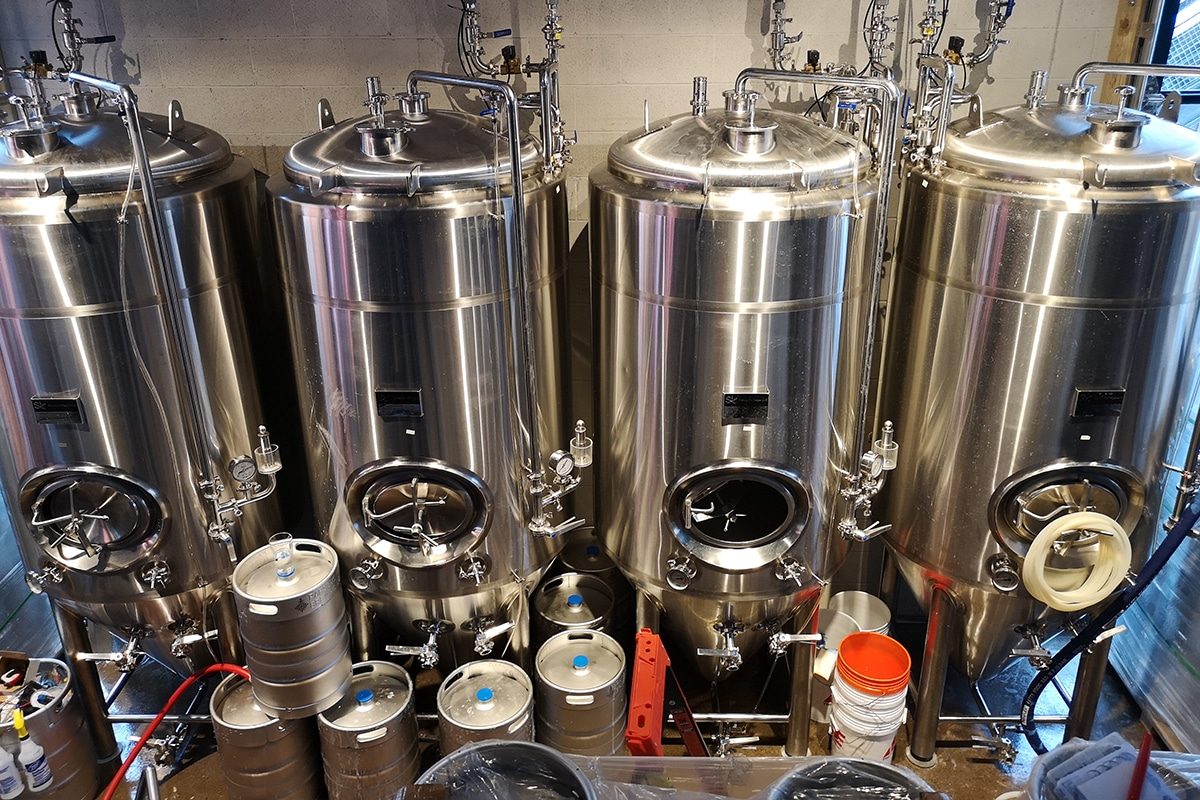
Government Support and Incentives
The significant factor contributing to the affordability of Chinese brewing equipment is the comprehensive support and incentives provided by the Chinese government to the manufacturing sector. These policies aim to stimulate industrial growth, promote innovation, and enhance the competitiveness of Chinese manufacturers in both domestic and international markets.
- Subsidies and Financial Assistance: The Chinese government offers a wide range of subsidies and financial assistance programs to support the manufacturing sector. These subsidies may include grants, tax incentives, low-interest loans, and financial assistance for research and development (R&D) activities. By providing financial support to brewing equipment manufacturers, the government helps reduce production costs, improve technological capabilities, and stimulate investment in innovation.
- Tax Breaks and Incentives: China’s tax policies include various incentives and breaks designed to reduce the tax burden on manufacturing enterprises. For example, manufacturers may benefit from preferential corporate income tax rates, exemptions from value-added tax (VAT) or sales tax on certain inputs, and deductions for R&D expenses. These tax incentives lower the overall cost of doing business for brewing equipment manufacturers, making their products more affordable and competitive in the global market.
- Industrial Policies and Strategic Initiatives: The Chinese government implements industrial policies and strategic initiatives to promote key sectors, including manufacturing. Initiatives such as the “Made in China 2025” plan prioritize the development of advanced manufacturing technologies, innovation, and high-value-added industries. Through targeted investments, infrastructure development, and policy support, the government aims to upgrade the capabilities of domestic manufacturers, enhance product quality, and foster the growth of strategic industries such as brewing equipment manufacturing.
- Export Promotion and Trade Support: China’s export promotion policies provide support and incentives to manufacturers seeking to expand their presence in international markets. Export-oriented enterprises, including brewing equipment manufacturers, may benefit from preferential treatment, export tax rebates, and assistance with market access and export documentation. These initiatives help Chinese manufacturers penetrate global markets, increase export volumes, and compete more effectively on the international stage.
- Research and Development Funding: The Chinese government allocates substantial funding to support research and development (R&D) activities in the manufacturing sector. R&D grants, subsidies, and other incentives encourage manufacturers to invest in innovation, product development, and technological advancement. By funding R&D projects, the government fosters the creation of new technologies, processes, and products that enhance the competitiveness of Chinese brewing equipment in the global market.
- Regulatory Support and Streamlining: The Chinese government strives to create a conducive regulatory environment for manufacturing enterprises by streamlining regulations, reducing administrative burdens, and improving regulatory transparency. Simplified licensing procedures, expedited approval processes, and clearer regulatory guidelines help reduce compliance costs and administrative overhead for brewing equipment manufacturers. This regulatory support enables manufacturers to focus on core business activities, enhance operational efficiency, and maintain cost competitiveness.
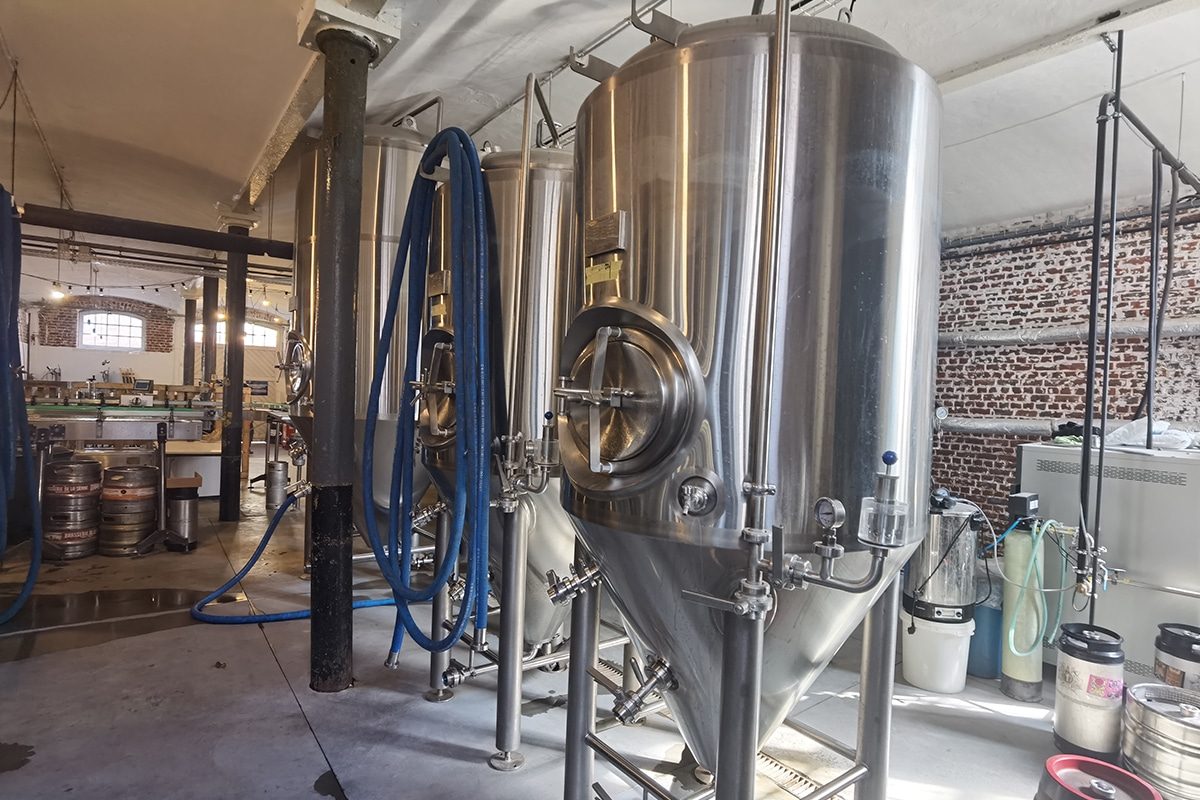
Quality Assurance and Buyer Considerations
While the affordability of Chinese brewing equipment is undeniable, buyers need to consider various factors related to quality assurance and make informed decisions when purchasing equipment. Understanding the quality control measures implemented by Chinese manufacturers and assessing buyer considerations can help ensure that affordability does not come at the expense of quality and reliability.
- Quality Control Standards: Chinese brewing equipment manufacturers adhere to rigorous quality control standards to ensure that their products meet or exceed industry specifications and customer expectations. Many manufacturers implement quality management systems such as ISO 9001 certification to maintain consistency and reliability in their manufacturing processes. Additionally, some manufacturers invest in third-party quality inspections and certifications to validate the quality and performance of their brewing equipment.
- Material Selection and Durability: When evaluating Chinese brewing equipment, buyers should pay close attention to the materials used in construction and assess their durability and longevity. High-quality materials such as food-grade stainless steel, copper, and heat-resistant plastics are commonly used in brewing equipment manufacturing. Buyers should inquire about the materials’ origin, composition, and manufacturing processes to ensure compliance with safety and hygiene standards and verify the equipment’s suitability for their brewing needs.
- Workmanship and Craftsmanship: The craftsmanship and attention to detail exhibited in the manufacturing process can significantly impact the quality of brewing equipment. Buyers should assess the weld quality, surface finish, and overall construction of the equipment to ensure structural integrity and reliability. Manufacturers with a reputation for superior workmanship and craftsmanship are more likely to deliver brewing equipment that meets or exceeds quality expectations.
- Performance and Functionality: Buyers should evaluate the performance and functionality of brewing equipment to ensure that it meets their specific requirements and brewing preferences. Factors such as brewing capacity, temperature control, efficiency, and ease of use should be considered when selecting equipment. Manufacturers may provide specifications, performance data, and user testimonials to help buyers assess the equipment’s performance and suitability for their brewing operations.
- After-Sales Support and Warranty: A reputable manufacturer should offer comprehensive after-sales support and warranty coverage to address any issues or concerns that may arise after purchase. Buyers should inquire about the manufacturer’s warranty policy, customer support services, and availability of spare parts and technical assistance. Prompt and responsive after-sales support can enhance the overall ownership experience and provide buyers with peace of mind regarding the reliability and longevity of their brewing equipment.
- Reviews and Recommendations: Reading reviews, testimonials, and recommendations from other brewers can provide valuable insights into the quality and reliability of Chinese brewing equipment. Buyers should seek feedback from industry peers, online forums, and review platforms to learn about others’ experiences with specific manufacturers and equipment models. Paying attention to common praises and concerns raised by previous buyers can help inform purchasing decisions and mitigate potential risks associated with quality issues.
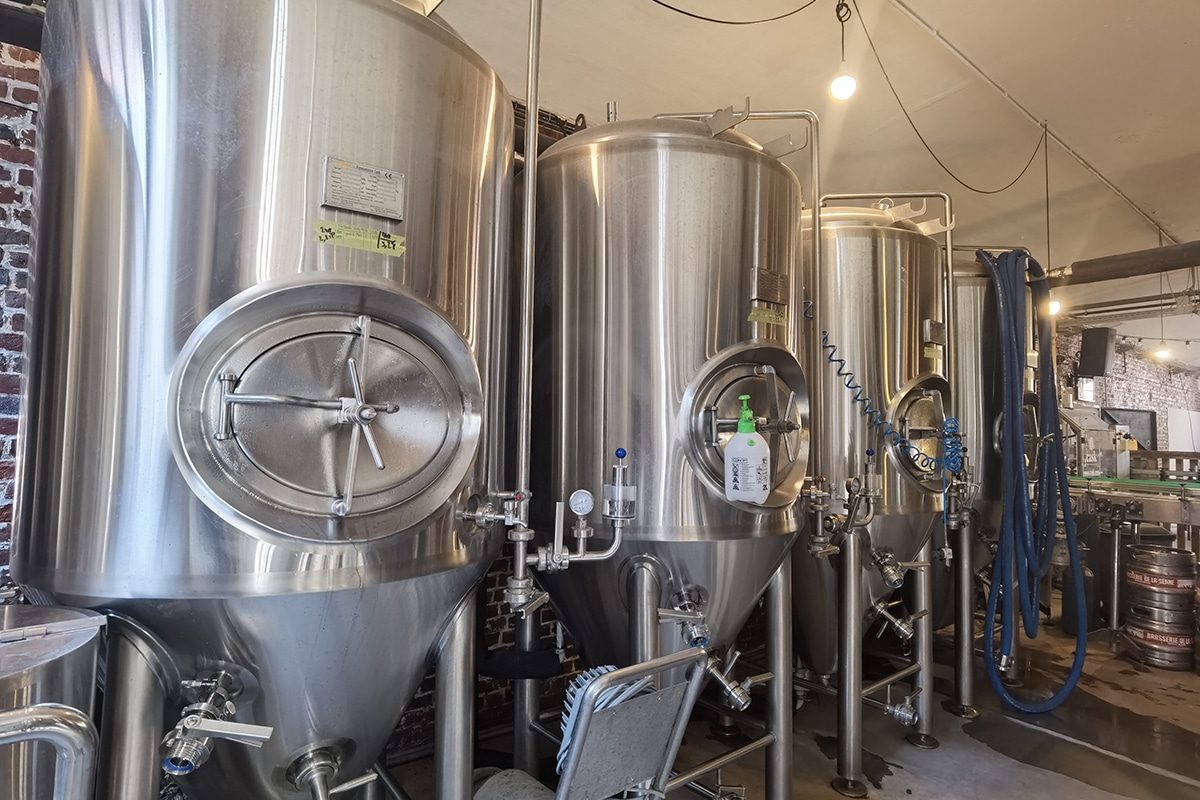
Summarize
The affordability of Chinese brewing equipment stems from a combination of factors that span economic, technological, and governmental realms. China’s historical evolution as a manufacturing powerhouse, driven by market reforms, technological advancements, and strategic policy interventions, has positioned the country as a global leader in producing high-quality brewing equipment at competitive prices.
Leveraging economies of scale, skilled labor, efficient supply chains, and favorable business environments, Chinese manufacturers optimize production processes and minimize costs without compromising on quality. Government support and incentives further bolster the competitiveness of Chinese brewing equipment by providing financial assistance, tax breaks, regulatory support, and export promotion.
However, buyers must exercise diligence in evaluating quality assurance measures, material selection, craftsmanship, performance, and after-sales support to ensure that affordability does not come at the expense of reliability or quality. By balancing cost considerations with quality assurance, brewers can capitalize on the affordability of Chinese brewing equipment while maintaining high standards of brewing excellence.
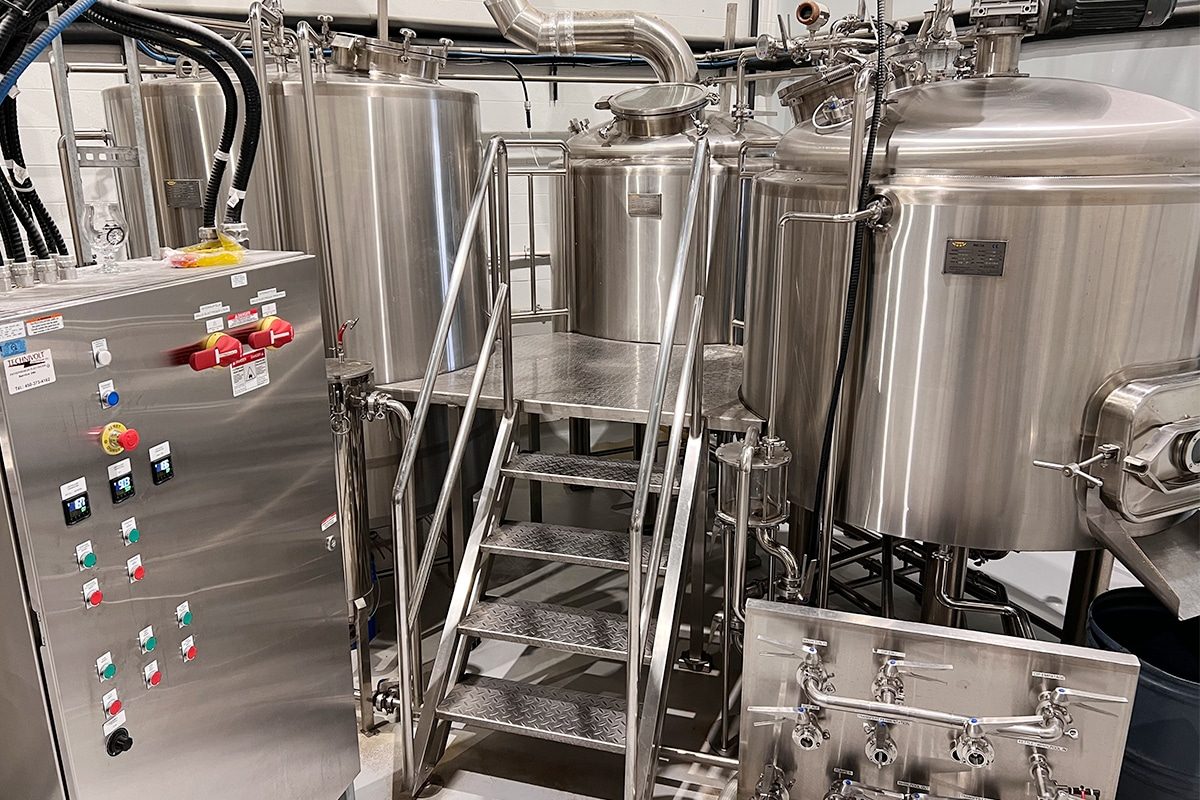
Get A Turnkey Brewery Solutions
ZYB Craft, as a professional brewhouse solution provider, specializes in delivering turnkey brewery solutions tailored to the unique needs and preferences of brewers worldwide. By leveraging economies of scale, efficient manufacturing processes, and strategic partnerships, ZYB Craft delivers cost-effective brewing equipment without compromising on quality or performance.
With ZYB Craft’s turnkey brewery solutions, brewers can streamline the brewery setup process, minimize operational complexities, and accelerate time-to-market for their craft beverages. From small-scale microbreweries to large-scale production facilities, ZYB Craft offers scalable solutions that meet the demands of brewers at every stage of their journey.
By choosing ZYB Craft’s turnkey brewery solutions, brewers can access high-quality brewing equipment, comprehensive support services, and expert guidance to achieve their brewing aspirations affordably and efficiently.



